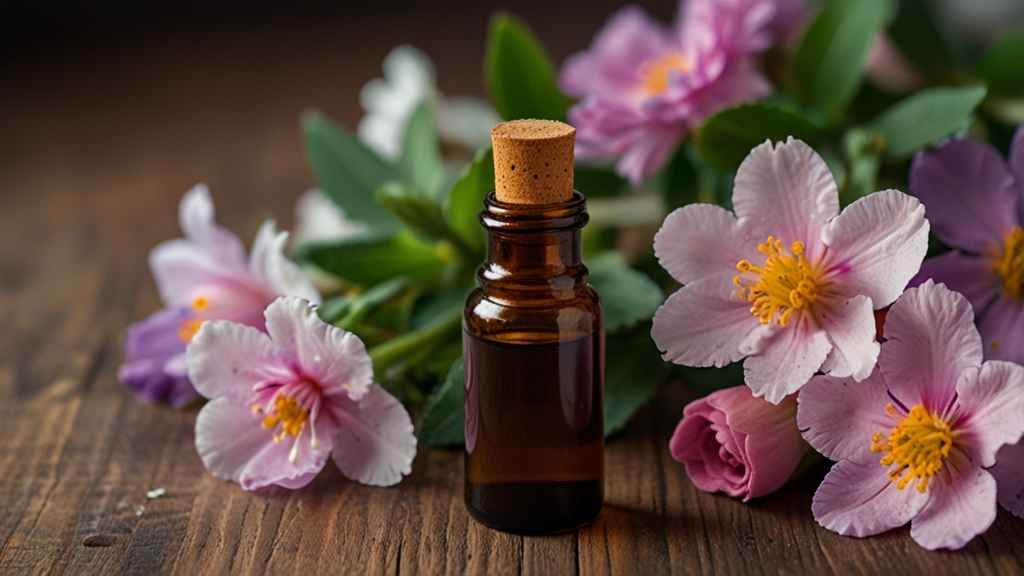If you’re curious about how to make essential oils from flowers, you’re in the right place. This process not only allows you to create your own natural, aromatic oils but also gives you the ability to harness the therapeutic properties of flowers for personal use. Whether you want to use them for relaxation, skincare, or mood enhancement, making essential oils from flowers like lavender can be an incredibly rewarding experience.
In this guide, we’ll take you through the step-by-step process of how to make essential oils from flowers, with a particular focus on lavender, one of the most popular and versatile flower oils. So, let’s get started!
What Are Essential Oils and Why Make Them from Flowers?
Before diving into the process of how to make essential oils from flowers, it’s important to understand what essential oils are. Essential oils are highly concentrated plant extracts that capture the natural essence, fragrance, and healing properties of the plants they come from. They are widely used in aromatherapy, massage, skincare, and cleaning products due to their therapeutic and medicinal benefits.
Flowers are an excellent source of essential oils due to their potent fragrance and beneficial properties. By making essential oils from flowers, you can enjoy all the benefits these plants offer, from calming lavender to uplifting rose. Lavender, for example, is known for its stress-relieving properties, making it a great choice for anyone looking to enhance their relaxation or sleep routine.
The Steam Distillation Process: How to Make Essential Oils from Flowers
One of the best methods for how to make essential oils from flowers is steam distillation. This method involves using steam to extract the oils from plant materials like flowers, and it is the most efficient and widely used technique for flower-based oils. Let’s walk through the process step-by-step.
Explore: Is there an essential oil for bruises?
Step 1: Gather Your Materials
To make essential oils from flowers, you will need the following materials:
- Fresh flowers (such as lavender, roses, or chamomile)
- Distillation apparatus (this can be a professional kit or a makeshift setup using items you have at home)
- Water
- A heat source (such as a stove or burner)
- A collection container (like a glass jar or vial)
- A separator (to separate the oil from the hydrosol)
Step 2: Harvest and Prepare the Flowers
The quality of the essential oil depends heavily on the freshness and quality of the flowers you use. For lavender, it’s best to pick the flowers in the morning when they are most fragrant. Use fresh flowers rather than dried ones to How to Make Essential Oils from Flowers by ensuring a higher yield of essential oil.
Explore: Identify flowers and trees with open source

Step 3: Set Up the Distillation Apparatus
The distillation apparatus consists of several components: a boiler, a condenser, and a collection container. Set up the boiler with water and add the fresh flowers. The flowers should be submerged in the steam but not entirely in water. The goal is to allow the steam to pass through the flowers and extract the essential oils without causing the water to overflow.
Step 4: Begin the Steam Distillation Process
Once the flowers are set up in the boiler, begin heating the water. The heat will create steam, which will pass through the flowers, extracting the essential oils. The steam will then travel into the condenser, where it cools and condenses back into liquid form.
Step 5: Collect the Essential Oil
As the steam cools, you will have a mixture of essential oil and water. Since essential oils are hydrophobic, they will float on top of the water. Use a separator to collect the essential oil from the hydrosol (flower water). Lavender hydrosol, for example, can also be used for other purposes, like facial toners or room sprays.
Step 6: Store Your Essential Oil
Once you’ve collected the essential oil, it’s important to store it properly to preserve its potency. Pour the oil into a dark glass bottle, away from light and heat, which can degrade the oil over time. Keep it in a cool, dark place to maintain its effectiveness.
Explore: Essential oil inhaler recipes for stuffy nose
The Benefits of Lavender Essential Oil
Lavender is one of the most popular flowers for essential oil extraction due to its numerous benefits. When you make essential oils from flowers like lavender, you’re not only capturing the fragrance but also the therapeutic properties. Here are a few reasons why lavender essential oil is so widely used:
- Stress Relief: Lavender essential oil is well-known for its calming effects. Inhaling its scent can help reduce anxiety and stress levels.
- Improved Sleep: Lavender oil is a natural sleep aid. A few drops of lavender on your pillow or in a diffuser can help promote restful sleep.
- Skin Healing: Lavender oil has antiseptic properties, making it useful for treating cuts, burns, acne, or other skin irritations.
- Headache Relief: Lavender essential oil is often used to alleviate headaches, particularly tension headaches, by applying a few drops to the temples.
How to Use Lavender Essential Oil
Once you’ve made your lavender essential oil, you can enjoy its benefits in a variety of ways:
- Aromatherapy: Diffuse the oil in your home to reduce stress, improve your mood, or promote relaxation.
- Topical Use: Lavender oil can be diluted with a carrier oil (like coconut or jojoba oil) and applied to the skin to treat irritations or promote healthy skin.
- Bath: Add a few drops of lavender essential oil to your bath for a soothing and calming experience.
Explore: Aromatherapy: Uses, benefits, oils, and risks

Other Flowers You Can Use to Make Essential Oils
While lavender is a top choice, there are many other flowers that can be used to create wonderful essential oils. Here are a few examples:
- Rose: Rose essential oil is known for its sweet, floral fragrance and is commonly used in skincare for its hydrating and rejuvenating properties.
- Chamomile: Chamomile essential oil is calming and soothing, making it a great choice for stress relief and skin irritations.
- Jasmine: With its exotic and sweet fragrance, jasmine oil is uplifting and is often used in perfumes and mood-enhancing blends.
Common Mistakes to Avoid When Making Essential Oils from Flowers
Creating essential oils from flowers is a rewarding process, but there are a few common mistakes to watch out for:
- Using Dried Flowers: Fresh flowers yield more essential oil and fragrance than dried ones. Always opt for fresh flowers when possible.
- Not Using Enough Flowers: To get a higher yield of essential oil, you’ll need to use a large quantity of flowers.
- Incorrect Distillation Temperature: The steam distillation process needs to be done at a moderate temperature. Too high or too low of a temperature can affect the quality of the oil.
- Improper Storage: Always store your essential oils in dark glass bottles, away from heat and light, to preserve their potency.
Conclusion
Learning how to make essential oils from flowers is an enjoyable and rewarding experience. Whether you choose lavender, rose, or chamomile, you can create your own natural oils at home using the steam distillation method. Lavender essential oil, in particular, offers a wide range of benefits, from promoting relaxation to improving sleep quality. By following the steps in this guide, you can harness the power of flowers and enjoy the many uses of homemade essential oils.
FAQs
1. Can I use dried flowers to make essential oils?
Fresh flowers are preferable because they contain more oil and fragrance. However, dried flowers can still be used if fresh ones are not available.
2. How long does it take to make essential oil from flowers?
The distillation process usually takes several hours, depending on the amount of flowers and water used.
3. Can I apply essential oils directly to my skin?
Essential oils should always be diluted with a carrier oil before applying to the skin to avoid irritation.
4. Do I need special equipment to make essential oils from flowers?
While a distillation kit is ideal, you can also use simple tools to create essential oils through infusion methods.
5. How should I store homemade essential oils?
Store essential oils in dark glass bottles, away from sunlight and heat, to preserve their quality and potency.


2 Comments
[…] Explore: How to Make Essential Oils from Flowers: A Step-by-Step Guide […]
[…] Explore: How to Make Essential Oils from Flowers: A Step-by-Step Guide […]